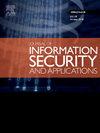RPCP-PURI: A robust and precise computational predictor for Phishing Uniform Resource Identification
IF 3.8
2区 计算机科学
Q2 COMPUTER SCIENCE, INFORMATION SYSTEMS
Journal of Information Security and Applications
Pub Date : 2024-12-31
DOI:10.1016/j.jisa.2024.103953
引用次数: 0
Abstract
The widespread growth of internet services has led to a substantial increase in traffic across multifarious online applications such as shopping, transportation, e-commerce, and banking. Cyber-criminals are stealing internet users credentials through Phishing Uniform Resource Locator (PURL). To make sure safe usage of web services, researchers have developed several AI-supported PURL predictors. Prime motivation behind development of each new predictor was to extract comprehensive features from URLS and more accurately discriminate benign and phishing URLs. Different predictors are enriched with diverse types of feature extraction strategies and deep potential exploration of these strategies remain unexplored. With an aim to develop more powerful PURL predictor, contributions of this manuscript are manifold: It brings different sets of feature extraction strategies at single platform and explores their individual as well as combine potential. It evaluates and compare the effectiveness of BERT language model for detection of phishing URLs (PURLs). It presents a novel LSTM and CNN-based hybrid predictor, which utilizes DeepWalk-generated URL embeddings to effectively discriminate between phishing and benign URLs. Extensive experimentation across three public benchmark datasets (EBBU2017, phishing sites URLs and Phishing and benign webpages) demonstrates that proposed hybrid predictor surpasses the performance of existing predictors by 0.2%, 1.9% and 1.2% respectively.
求助全文
约1分钟内获得全文
求助全文
来源期刊

Journal of Information Security and Applications
Computer Science-Computer Networks and Communications
CiteScore
10.90
自引率
5.40%
发文量
206
审稿时长
56 days
期刊介绍:
Journal of Information Security and Applications (JISA) focuses on the original research and practice-driven applications with relevance to information security and applications. JISA provides a common linkage between a vibrant scientific and research community and industry professionals by offering a clear view on modern problems and challenges in information security, as well as identifying promising scientific and "best-practice" solutions. JISA issues offer a balance between original research work and innovative industrial approaches by internationally renowned information security experts and researchers.
 求助内容:
求助内容: 应助结果提醒方式:
应助结果提醒方式:


